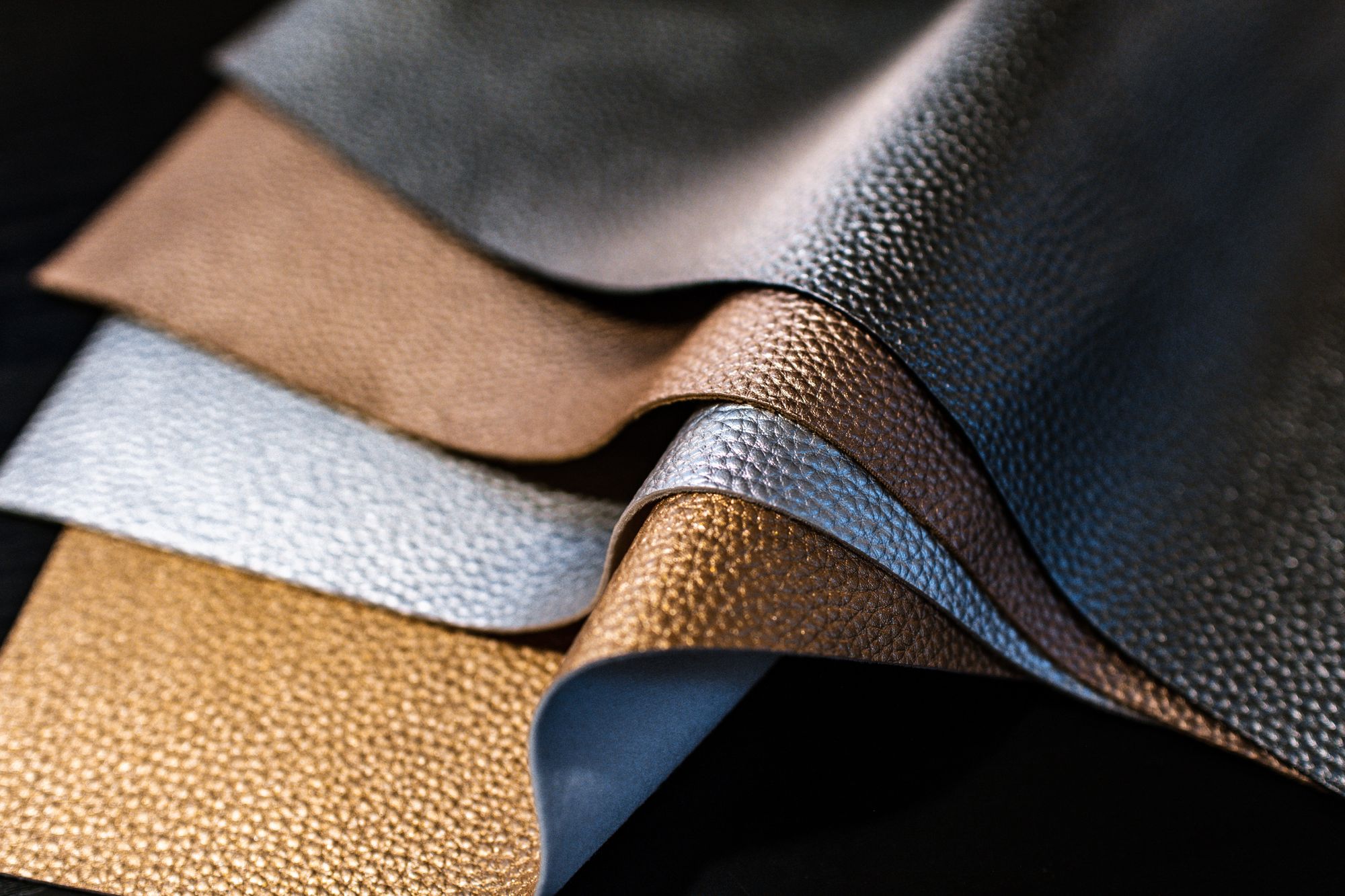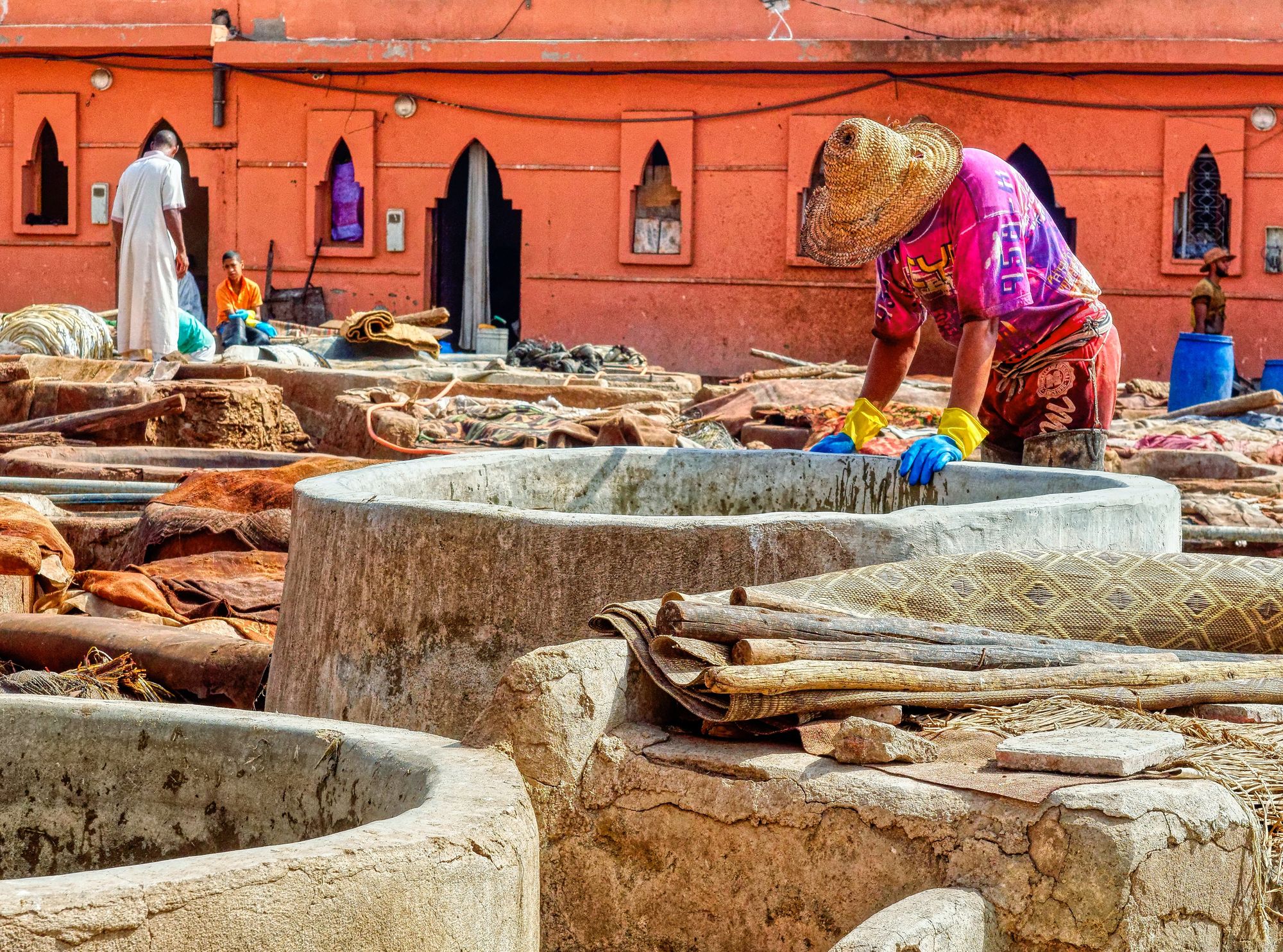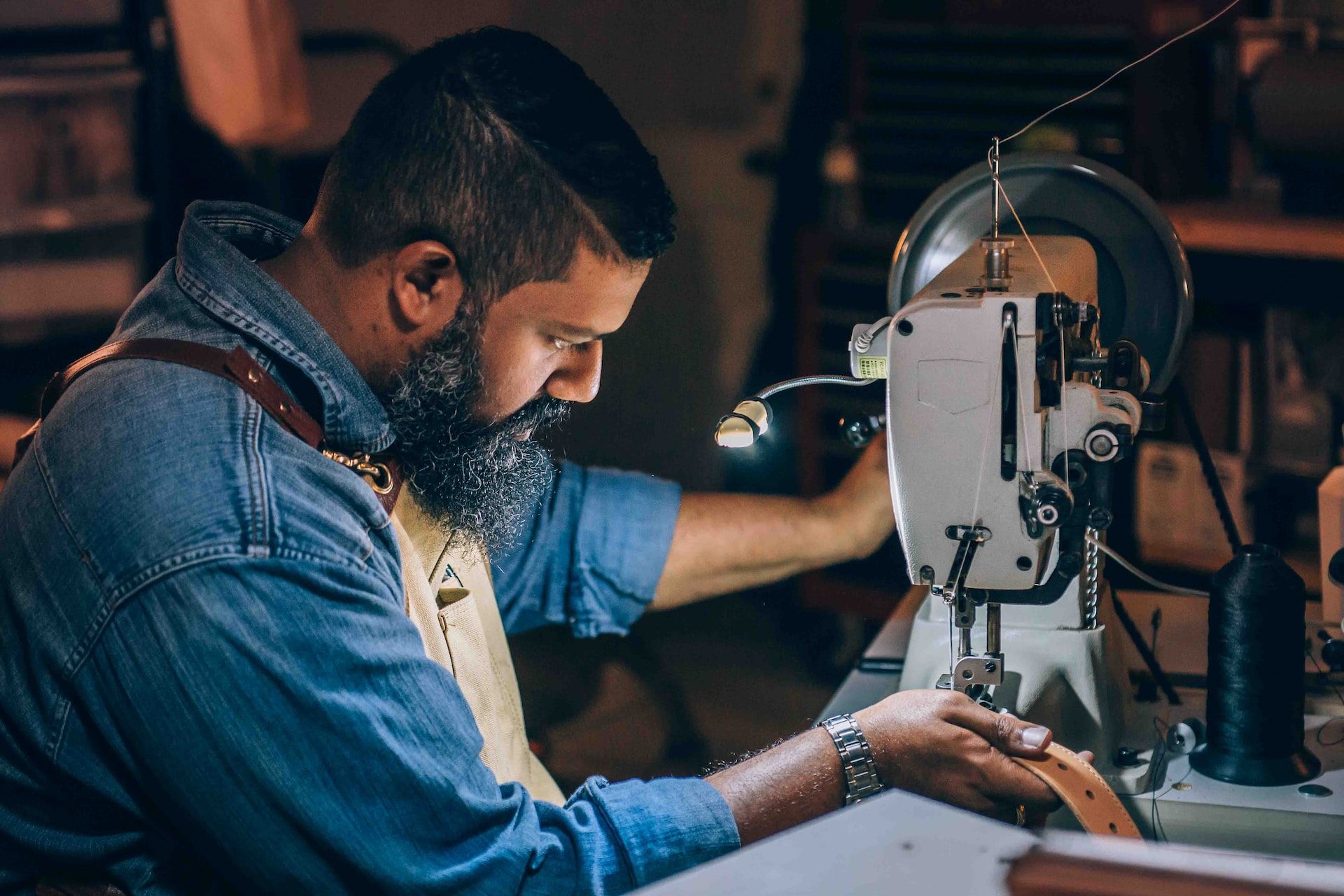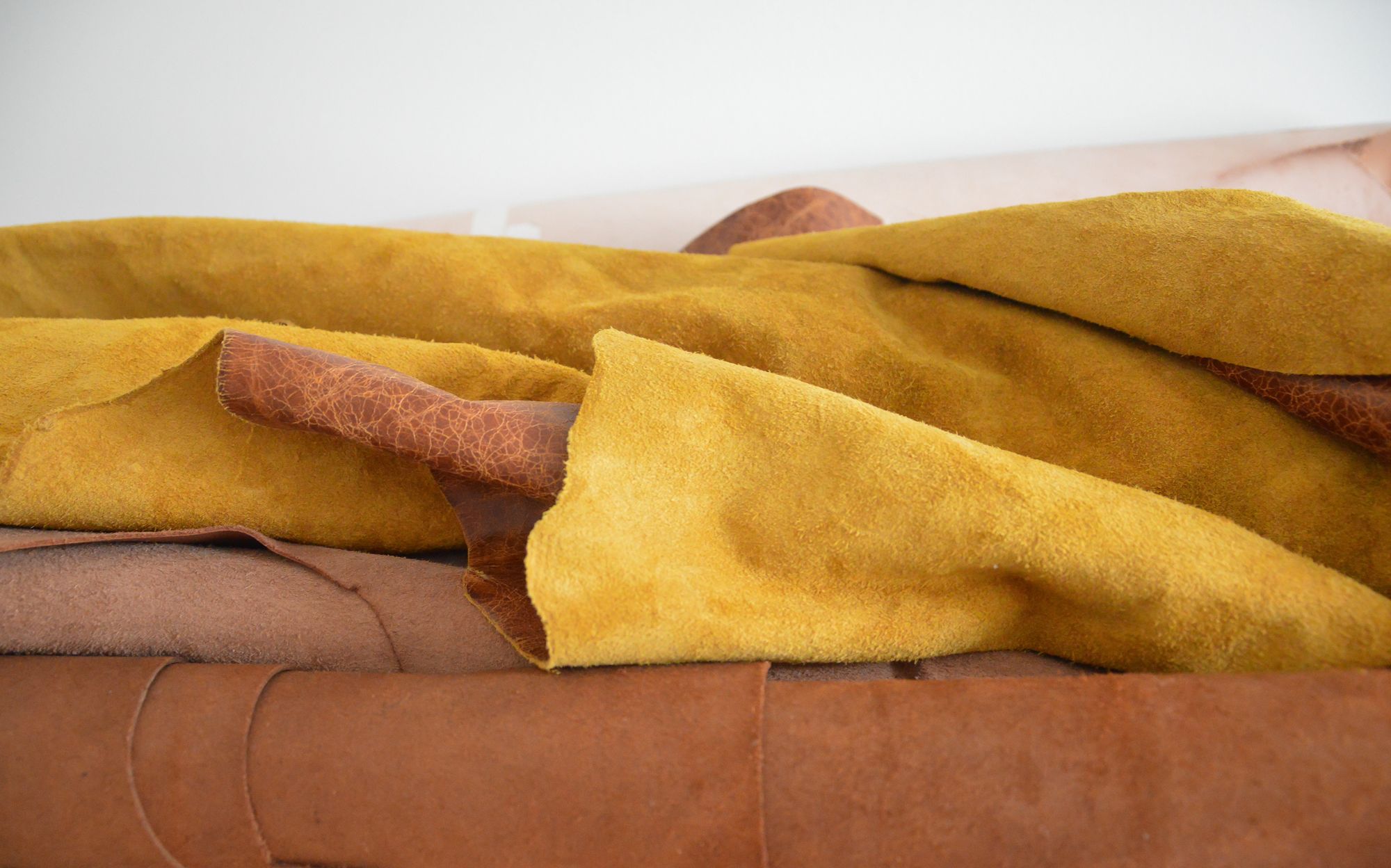The global leather industry produces about 18 billion square feet of leather a year (2003 data) with an estimated value of about $40 billion2. Developing countries now produce over 60% of the world’s leather needs. Considering this rise, it is essential to have the best ingredients to produce leather. In this article, we will learn how to select the best ingredients for leather production.
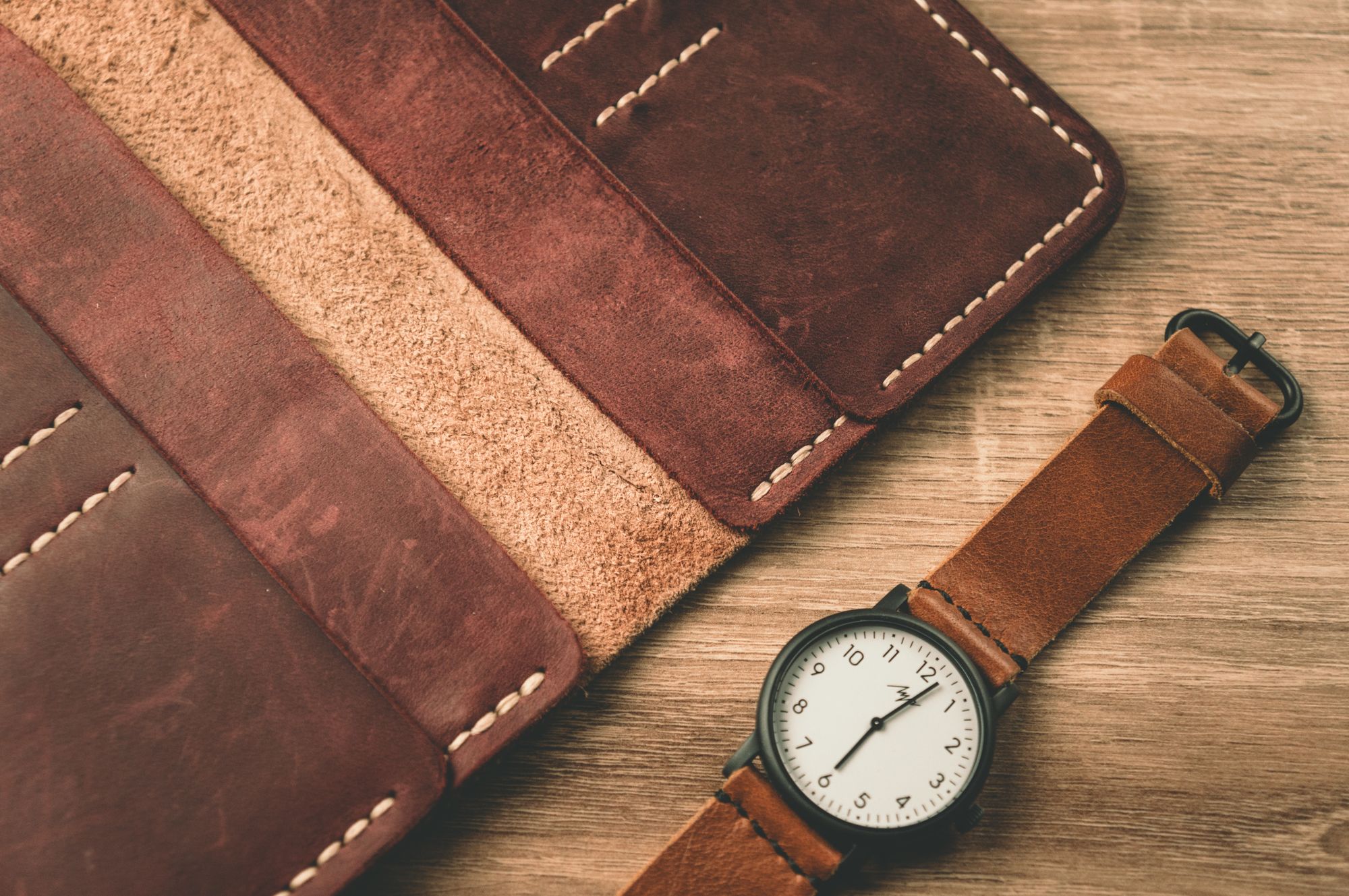
This article covers the following:
- The history of leather production: tracing the origins of leather and its evolution over time
- What is the importance of leather production?
- Types of leather: understanding the differences between full-grain, top-grain, split, and bonded leather
- Tanning methods: exploring the various techniques used to transform animal hides into leather, including vegetable tanning, chrome tanning, and more
- Environmental impacts of leather production: examining the sustainability issues associated with the leather industry and efforts to address them
- Leather care and maintenance: tips for keeping your leather goods looking their best and extending their lifespan
- The uses of leather: from fashion to furniture, exploring the many applications of this versatile material
- Leather and animal welfare: discussing the ethical considerations involved in using animal hides for leather production
- Leather production around the world: a look at how leather is made in different countries and regions, and the unique qualities of each
- Leather alternatives: examining the growing market for vegan and synthetic leather, and their pros and cons
- Famous leather products: highlighting some of the most iconic leather goods of all time, from leather jackets to luxury handbags.
The History of Leather Production: Tracing the Origins of Leather and its Evolution Over Time
Leather is a material that has been used for a variety of purposes throughout human history. From clothing to footwear to furniture and accessories, leather has been a mainstay of human civilization for thousands of years. The history of leather production can be traced back to ancient times when it was first used for practical purposes such as protection from the elements and for making tools. Over time, however, the use of leather has evolved, becoming a symbol of luxury and status. In this essay, we will trace the origins of leather and its evolution over time.
The Origins of Leather
The origins of leather production can be traced back to prehistoric times, where early humans used animal hides as a means of protection against the elements. The use of animal hides was a practical solution to the problem of staying warm and dry in harsh environments, and it quickly became an essential part of early human survival. As humans began to domesticate animals, the use of animal hides for clothing and shelter became more widespread, and the techniques for processing these hides began to evolve.
One of the earliest known methods for processing animal hides was the use of brains to soften the hides. This method, which is still used today in some traditional leather-making communities, involves soaking the hides in a mixture of water and animal brains to help break down the proteins in the hides and make them more pliable. As human societies became more sophisticated, other methods of tanning hides were developed, including the use of tree bark and other natural substances to create a tanning solution.
The Evolution of Leather Production
As human societies began to develop more complex trade networks and cultural exchanges, the use of leather began to evolve beyond practical applications. Leather became a symbol of luxury and status, used for clothing and accessories that were reserved for the wealthiest members of society. In ancient Egypt, for example, leather was used to make sandals, belts, and other accessories that were worn by the pharaohs and other members of the royal court. The Egyptians also used leather for furniture, creating elegant chairs and sofas that were covered in finely crafted leather.
In ancient Rome, leather was used for a wide range of purposes, from military equipment to clothing and footwear. The Romans were known for their expertise in leatherworking, and they developed many of the techniques and tools that are still used in modern leather production today. The Romans were also the first to use leather for decorative purposes, creating intricate designs and patterns that were embossed onto the leather using special tools.
During the Middle Ages, leather production continued to evolve, with many new techniques and innovations being developed. Leather was used for a wide range of purposes during this time, including armor for knights, shoes and boots for peasants, and upholstery for furniture. Leatherworking guilds were established in many cities across Europe, and these guilds played an important role in regulating the quality and standards of leather production.
In the 18th and 19th centuries, leather production underwent a significant transformation as new machines and technologies were developed. The introduction of the steam engine and other mechanical innovations made it possible to produce leather on a much larger scale, and new tanning methods were developed that allowed for the production of high-quality leather at a lower cost. As a result, leather became much more widely available and affordable, and it began to be used for a wider range of purposes, including in the manufacturing of automobiles and other industrial products.
Today, leather production is a highly sophisticated industry, with modern techniques and technologies that allow for the creation of high-quality leather products at a large scale. While traditional methods of leatherworking are still used in some communities around the world, most leather production today is highly automated and industrialized, with sophisticated machinery and computerized systems used to monitor and control the various stages of the production process.
What is the Importance of Leather Production?
Leather production has been an important industry for centuries, with leather products used in a wide range of applications, from fashion and footwear to furniture and car interiors. Here are some of the reasons why leather production is important:
- Durability: Leather is a highly durable material, which makes it ideal for products that need to withstand wear and tear. It is resistant to water, heat, and other environmental factors, making it a popular choice for products like shoes, belts, and bags.
- Comfort: Leather is a flexible material that conforms to the shape of the wearer's body, making it comfortable to wear. It is also breathable, which helps regulate temperature and prevent sweating.
- Sustainability: Leather is a natural material that is biodegradable and can be recycled. It is also a by-product of the meat industry, so using leather helps reduce waste.
- Economic benefits: Leather production is an important industry that supports jobs and generates income for communities. It is also a valuable export commodity that contributes to the economy.
- Cultural significance: Leather products have been part of human culture for thousands of years, with different cultures using leather for various purposes. Today, leather products are still an important part of many cultural traditions and styles.
However, it is important to note that leather production can have negative environmental and social impacts if not done sustainably and ethically. To ensure the responsible production of leather, it is essential to source materials from suppliers who adhere to ethical and environmental standards and to promote the use of sustainable and eco-friendly leather alternatives where possible.
Types of leather: understanding the differences between full-grain, top-grain, split, and bonded leather
Leather is a classic, timeless material that has been used in clothing, furniture, and accessories for centuries. It’s no wonder that it continues to be one of the most popular materials used in the fashion and home decor worlds.
But did you know that there are actually different types of leather? It’s important to know the differences between them so you can make the best choices for your needs. Here’s a guide to the different types of leather and what you need to know about them.
Full-Grain Leather Full-grain leather is the most natural type of leather you can buy. It’s made from the outer layer of the hide, which is the strongest and most durable part. This type of leather is also the most breathable, so it will last a long time without wearing out.
It also has a unique texture and patina that develops over time, adding to its character and charm. Top-Grain Leather Top-grain leather is the second highest quality type of leather.
It’s made from the top layer of the hide, but it has been sanded and buffed to remove any imperfections or blemishes. This makes it a bit more uniform in texture and appearance than full-grain leather.
It’s also slightly less breathable than full-grain leather but still a great choice if you’re looking for a quality leather material. Split Leather Split leather is made from the lower layers of the hide and is not as strong or durable as full-grain or top-grain leather.
It’s usually less expensive than other types of leather and is often used for furniture or accessories. It has a more uniform texture and appearance, but it’s also not as breathable as full-grain or top-grain leather.
Bonded Leather Bonded leather is the least expensive type of leather and is usually made from scraps of leather that have been bonded together with a polyurethane or vinyl coating. It’s not as strong or durable as other types of leather, and it won’t develop the same patina as full-grain or top-grain leather. It’s often used for furniture and accessories, but it’s important to keep in mind that it won’t last as long as other types of leather.
Tanning Methods
Tanning is the process of transforming animal hides into leather. The process requires the use of different tanning methods, each with its unique set of advantages and drawbacks.
Vegetable tanning is one of the oldest tanning methods in existence. It involves a process of soaking the animal hides in a solution of natural and organic vegetable matter, such as tree bark, stems, and leaves.
This tanning solution helps to preserve the hides and also gives the leather a unique and natural look. The process is slow, taking several weeks to complete, but the end result is a beautiful, durable, and flexible leather.
The main advantages of vegetable tanning are its natural look, its breathability, and its lack of harsh chemicals. The main drawbacks are that it is time-consuming, expensive, and not suitable for some types of leather.
Chrome tanning is a more modern tanning method. It involves a process of soaking the hides in a solution of chromium salts. This tanning solution helps to preserve the hides and gives the leather a more uniform look.
The process is much faster than vegetable tanning, taking only a few days to complete. The main advantages of chrome tanning are its speed and affordability. The main drawbacks are that it is not as breathable as vegetable tanning, and it often uses harmful chemicals.
In conclusion, both vegetable tanning and chrome tanning have their advantages and drawbacks. Each tanning method is suitable for different types of leather, so it is important to consider the type of leather you are working with before deciding which tanning method to use.
Environmental impacts of leather production: examining the sustainability issues associated with the leather industry and efforts to address them.
How to Select the Best Ingredients for Leather Production?
The selection of the best ingredients for leather production is crucial to produce high-quality leather products. Here are some steps to help you select the best ingredients:
- Select the type of leather you want to produce: The type of leather you want to produce will determine the type of ingredients you need. For example, if you want to produce soft leather, you will need to select softer hides.
- Choose the best hides: The quality of the hides used for leather production is important. Look for hides that are free of cuts, holes, or other imperfections. Also, check for the thickness and size of the hides, as they will affect the final product.
- Determine the tanning method: Different tanning methods require different ingredients. For example, vegetable tanning requires tannins from tree bark, while chrome tanning requires chrome salts.
- Select the tanning agents: The tanning agents are crucial for the quality of the leather. The type and amount of tanning agents used will determine the strength, flexibility, and color of the leather. Some common tanning agents include vegetable tannins, chrome salts, and aldehydes.
- Choose the finishing agents: The finishing agents are used to give the leather its final texture, shine, and color. Some common finishing agents include dyes, pigments, and oils.
- Consider the environmental impact: Leather production can have a significant environmental impact. Consider selecting ingredients that are more environmentally friendly, such as vegetable tanning agents instead of chrome tanning agents.
Overall, selecting the best ingredients for leather production involves considering the type of leather, the quality of the hides, the tanning method, the tanning agents, the finishing agents, and the environmental impact.
How to Find the Best Ingredients for Leather Production?
The quality of leather is determined by the quality of its raw materials or ingredients. The following are some steps that can help in finding the best ingredients for leather production:
- Determine the type of leather you want to produce: Different types of leather require different raw materials. For example, cowhide leather requires cowhides, while sheepskin leather requires sheepskins. So, you need to determine the type of leather you want to produce before you start looking for the raw materials.
- Look for reputable suppliers: Look for reputable suppliers of raw materials for leather production. These suppliers should be able to provide you with high-quality raw materials that meet your specifications. You can search for suppliers online, attend trade shows, or ask for recommendations from other leather manufacturers.
- Check the quality of the raw materials: Once you have found potential suppliers, you need to check the quality of their raw materials. The quality of the raw materials will determine the quality of the finished product. Check for defects such as scars, insect bites, or discoloration. Also, check the thickness and texture of the hides.
- Consider the origin of the raw materials: The origin of the raw materials can affect their quality. For example, hides from countries with harsh climates tend to have more pronounced grains and scars, which can affect the quality of the finished product. So, consider the origin of the raw materials before making a purchase.
- Test the raw materials: Before making a large purchase, it is a good idea to test the raw materials. Test the hides for their tanning properties, stretchability, and durability. This will give you an idea of how the finished product will look and feel.
Leather care and maintenance
Leather is a classic and timeless fabric that is used to make beautiful and durable clothing, shoes, furniture, and other items. It's also very versatile and can be used for a variety of purposes.
With proper care and maintenance, leather can last for years and even decades. Leather is a natural material that comes from animals such as cows, sheep, and goats. It is made up of collagen fibers that are tanned and treated to make it stronger and more durable.
Leather is also susceptible to damage from the elements, including sun, rain, and extreme temperatures. It's important to protect leather from these elements to keep it looking its best and to extend its life.
To care for leather, it's important to clean it regularly. This can be done using a mild cleaner, such as a mild dish soap and water solution, or a leather cleaning product. Make sure to remove all dirt, debris, and residue from the leather before applying a leather conditioner.
This will help to keep the leather soft and pliable and will help to prevent cracking. Leather conditioners come in a variety of formulas, so it's important to choose one that is appropriate for the type of leather you are treating.
It's also important to make sure to follow the instructions on the product. After the conditioner has been applied, buff it with a soft cloth to create a protective layer. It's also important to protect leather from the elements.
If you are storing leather items, make sure to keep them away from direct sunlight and in a cool, dry place. If you are using leather items outdoors, make sure to apply a waterproofing product to help protect it from rain and other moisture.
Finally, it's important to repair any damage that occurs to leather items. This can be done by using a leather repair kit or by taking it to a professional leather repair specialist. By following these tips, you can keep your leather items looking their best for years to come. With proper care and maintenance, leather can last for decades and will continue to look beautiful.
The Uses of Leather
Leather is one of the most versatile materials known to man, and it has been used for centuries for a variety of purposes. From clothing to furniture and even art, leather has been used to create beautiful and durable items for many years. But what are some of the specific uses for leather?
Clothing
Leather has been used for clothing since ancient times. From jackets and coats to shoes and even accessories, leather is a popular choice for clothing items. It is durable, stylish, and can be customized to suit the individual.
Furniture
Leather is a great choice for furniture. It is strong, resistant to wear and tear, and can look great when matched with the right decor. From couches and chairs to ottomans and footstools, leather is an ideal material for furniture.
Upholstery
Leather is used in upholstery for cars and other vehicles because of its durability and resistance to wear and tear. It also provides a luxurious look and feels. Footwear: Leather is commonly used in footwear, such as shoes, boots, and sandals. The material is durable and can be customized for a variety of looks.
Accessories
Leather is also used in a variety of accessories, from purses and wallets to belts and other items. It provides a classic look and can be matched with different clothing styles. Art: Leather is also used in many forms of art, such as leatherworking, carving, and even painting.
It is a popular material for creating sculptures, masks, and other pieces of art. These are just a few of the many uses of leather. As you can see, this versatile material has been used for centuries to create beautiful and durable items. Whether you’re looking for clothing, furniture, or even art, leather is an excellent choice.
Leather and Animal Welfare
Leather is a popular material that is used in the fashion industry, furniture production, and even in the automotive industry. The material is derived from the skin of animals such as cows, pigs, goats, and sheep. While leather has been used for centuries, there has been a growing concern regarding the ethical treatment of animals used in the production of leather.
Animal welfare refers to the ethical treatment of animals used for human purposes, including food production, scientific research, and material production such as leather. Animal welfare advocates argue that the leather industry causes unnecessary harm and suffering to animals.
In this blog, we will explore the relationship between leather and animal welfare, and the steps that are being taken to ensure that animals are treated ethically in the leather industry.
The Leather Industry
The leather industry is a multibillion-dollar industry that is spread across the globe. The process of making leather involves several stages, including skinning, tanning, and finishing. Skinning involves the removal of the animal's skin, which is then cleaned and processed to remove hair and flesh.
Tanning is the process of treating the skin with chemicals to make it more durable and resistant to decay. Tanning involves the use of a variety of chemicals, including chromium, which is known to be toxic and harmful to the environment. Finally, the leather is finished by applying dyes, finishes, and coatings.
Animal Welfare Concerns
The leather industry has come under fire from animal welfare advocates due to the methods used to obtain the animal skin. Many animal rights organizations argue that the animals used in the leather industry are often subjected to inhumane and cruel conditions.
Leather Production Around the World: a Look at How Leather is Made in Different Countries and Regions
Leather production is an ancient and integral part of many cultures around the world. From ancient times to the present, leather has been used to make clothing, footwear, and other items of daily use.
In more recent times, it has also become an important material in the production of furniture, automotive interiors, and accessories. While the process of leather production is broadly similar regardless of region or country, there are subtle differences in the way it is made in different regions.
In the United States, leather production is typically done in two stages. First, the rawhide is soaked in a chemical solution to soften it. This is followed by tanning, which is the process of imparting color and strength to the leather.
Tanning is typically done using either vegetable tanning (using natural ingredients such as tree bark) or chrome tanning (using chromium sulfate). The leather is then finished with various techniques, such as oiling, embossing, or dyeing.
In Europe, two main methods of leather production are used. The first is vegetable tanning, which is the same as in the United States. The second is aldehyde tanning, which uses formaldehyde to tan the leather.
This method is faster than vegetable tanning and produces softer, more durable leather. The leather is then finished using a variety of techniques, including dyeing, embossing, and oiling.
In India, leather production is traditionally done by hand. This is done by soaking the hides in a water and salt solution, which softens them. The hides are then tanned using a variety of techniques, such as vegetable tanning and chrome tanning.
The leather is then finished with a variety of techniques, including dyeing, embossing, and oiling. In China, a variety of processes are used to make leather. In the north, vegetable tanning is the most common method.
In the south, chrome tanning is the most common method. Once the leather is tanned, it is finished with a variety of techniques, including dyeing, embossing, and oiling. In each region, the techniques used to make leather are adapted to the local conditions and resources. While the process is broadly similar, the subtle differences in how leather is made in different regions give each region its own unique character. Thus, leather produced in different parts of the world has its own distinct qualities and characteristics.
Leather Alternatives
As the world continues to move toward a greener, more sustainable future, the use of animal-based leather is becoming increasingly frowned upon. For those who want to maintain their style and look without compromising their ethical values, there are now several great leather alternatives available.
This guide will look at the various eco-friendly materials used in modern leather alternatives, what makes them so special, and where you can find them. The Benefits of Leather Alternatives.
Leather alternatives are a great way to maintain your style while also helping to protect the environment. These materials offer many of the same benefits of traditional leather, such as durability, comfort, and water resistance. In addition, they are typically much more economical than traditional leather and often require less maintenance.
The main difference between leather alternatives and traditional leather is their environmental impact. By choosing to use a vegan alternative, you are helping to reduce the demand for animal-based leather, thus reducing the number of animals that are farmed for this purpose.
Types of Leather Alternatives There are several different types of leather alternatives available, each with its own unique properties. Here is a look at some of the most popular materials:
Pinatex
This natural, sustainable fabric is made from pineapple leaves. It is a strong, durable material with a soft, supple feel. Pinatex is ideal for making shoes, bags, and other accessories.
Cork
Cork is a natural, sustainable material that is harvested from the bark of cork oak trees. It is light, water-resistant, and very durable. Cork is often used to make wallets, bags, and other small accessories.
Recycled Plastic
This material is made from recycled plastic bottles. It is durable, lightweight, and water-resistant. Recycled plastic is often used to make shoes, bags, and other accessories.
Bamboo
Bamboo is a renewable resource that is strong, lightweight, and water-resistant. It is often used to make footwear, wallets, and other small accessories. Where to Find Leather Alternatives Now that you know more about the various types of leather alternatives available, you may be wondering where you can find them.
There are several online retailers that specialize in vegan products. Additionally, many local retailers are beginning to stock vegan items, so be sure to check with your favorite stores. In conclusion, leather alternatives are a great way to maintain your style without compromising your values.
There are several eco-friendly materials available, each with its own unique properties. Whether you are looking for shoes, bags, or other accessories, there is sure to be a vegan alternative that is perfect for you.
Famous Leather Products
Leather has been a popular material for fashion and accessories for centuries. Its suppleness, strength, and durability make it an ideal choice for bags, jackets, shoes, and other fashion accessories.
Leather products are known for their elegance, timelessness, and quality, and they make a great addition to any wardrobe. Leather jackets are classic item that comes in a variety of styles.
From classic biker jackets to aviator jackets and bomber jackets, leather jackets are versatile and stylish. They are also typically quite warm, making them perfect for chilly days and nights.
Leather bags are also a classic choice for fashion enthusiasts. From tote bags to backpacks and purses, leather bags come in a range of sizes and colors to suit any occasion.
Leather is also an ideal choice for briefcases, as it is both stylish and resilient. Leather shoes are a wardrobe staple for both men and women. From classic Oxfords to Chelsea boots and loafers, leather shoes can be dressed up or down and come in a variety of colors.
Leather shoes are also typically quite durable, making them a great investment piece. Leather accessories are also popular, with leather belts, wallets, and keychains being popular choices.
Leather is also a great choice for watch straps, as it is both stylish and durable. Leather is a timeless material that is sure to bring style and elegance to any wardrobe. Whether you’re looking for jackets, bags, shoes, or accessories, leather is a great choice for any fashion enthusiast. With its range of styles, colors, and sizes, there is sure to be something for everyone.
How Can Deskera Assist You?
As a manufacturer, you must keep track of your inventory stock. The condition of your inventory has a direct impact on production planning. It also has a direct impact on people and machinery use and capacity utilization.

Deskera MRP is the one tool that lets you do all of the above. With Deskera, you can:
- Control production schedules
- Compile a Bill of Materials
- Produce thorough reports
- Make your dashboard
Deskera ERP is a complete solution that allows you to manage suppliers and track supply chain activity in real-time. It also allows you to streamline a range of other company functions.
Deskera Books allows you to manage your accounts and finances better. It helps maintain good accounting standards by automating billing, invoicing, and payment processing tasks.
Deskera CRM is a powerful tool that organizes your sales and helps you close deals rapidly. It enables you to perform crucial tasks like lead generation via email and gives you a comprehensive view of your sales funnel.
Deskera People is a straightforward application for centralizing your human resource management activities. Not only does the technology expedite payroll processing, but it also helps you to handle all other operations such as overtime, benefits, bonuses, training programs, and much more.
Key Takeaways:
- The leather manufacturing industry is highly competitive, with many players vying for a share of the market.
- Another trend that is likely to shape the future of the leather industry is the growing demand for personalized and customized products.
- Emerging markets such as China, India, and Brazil are becoming major players in the leather industry.
- Some of the main environmental concerns associated with leather production include the use of hazardous chemicals, high water usage, air and water pollution, and deforestation.
- The future of the leather manufacturing industry is likely to be shaped by a range of factors, including changing consumer preferences, technological advancements, and environmental concerns.
Related Articles:
